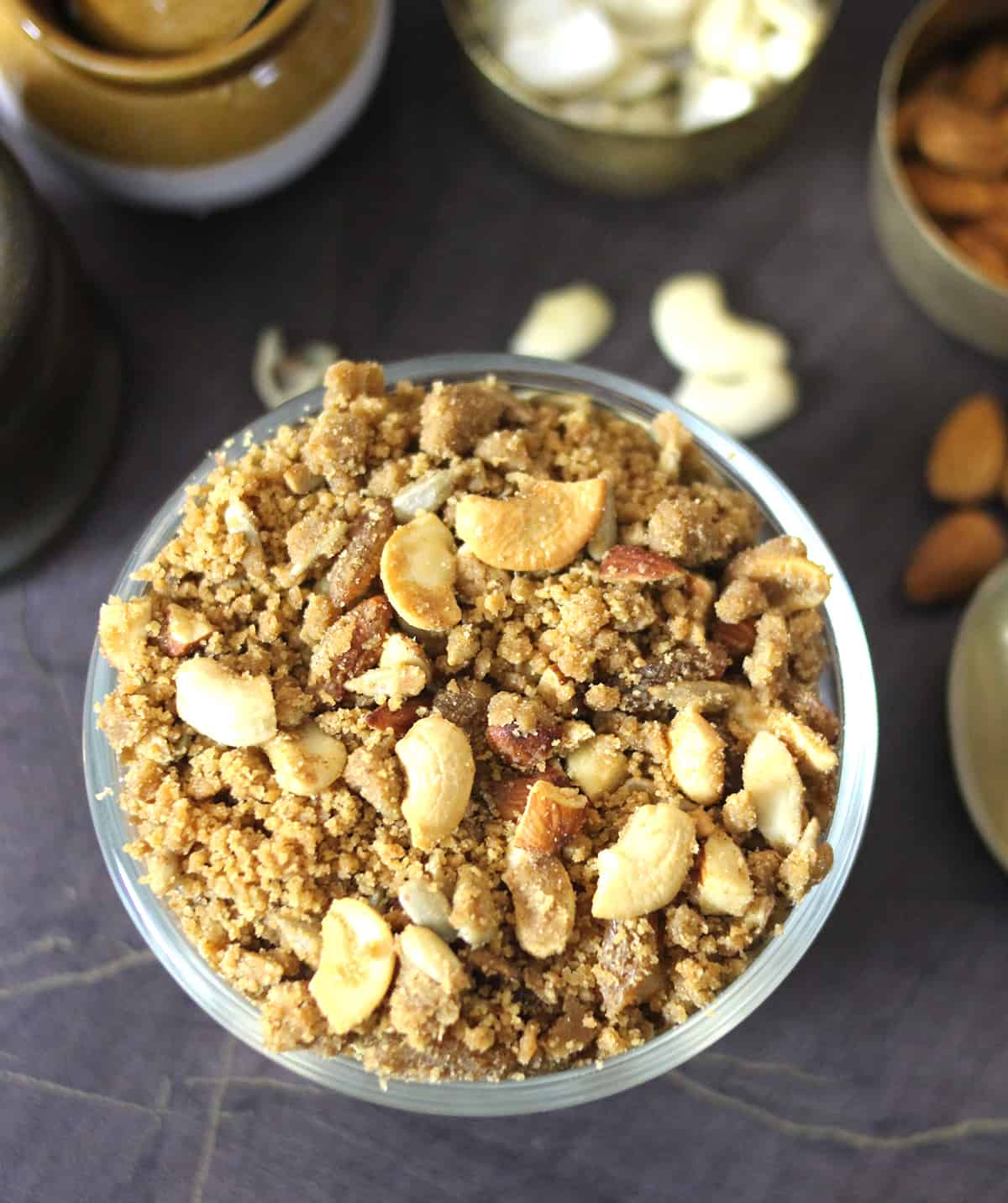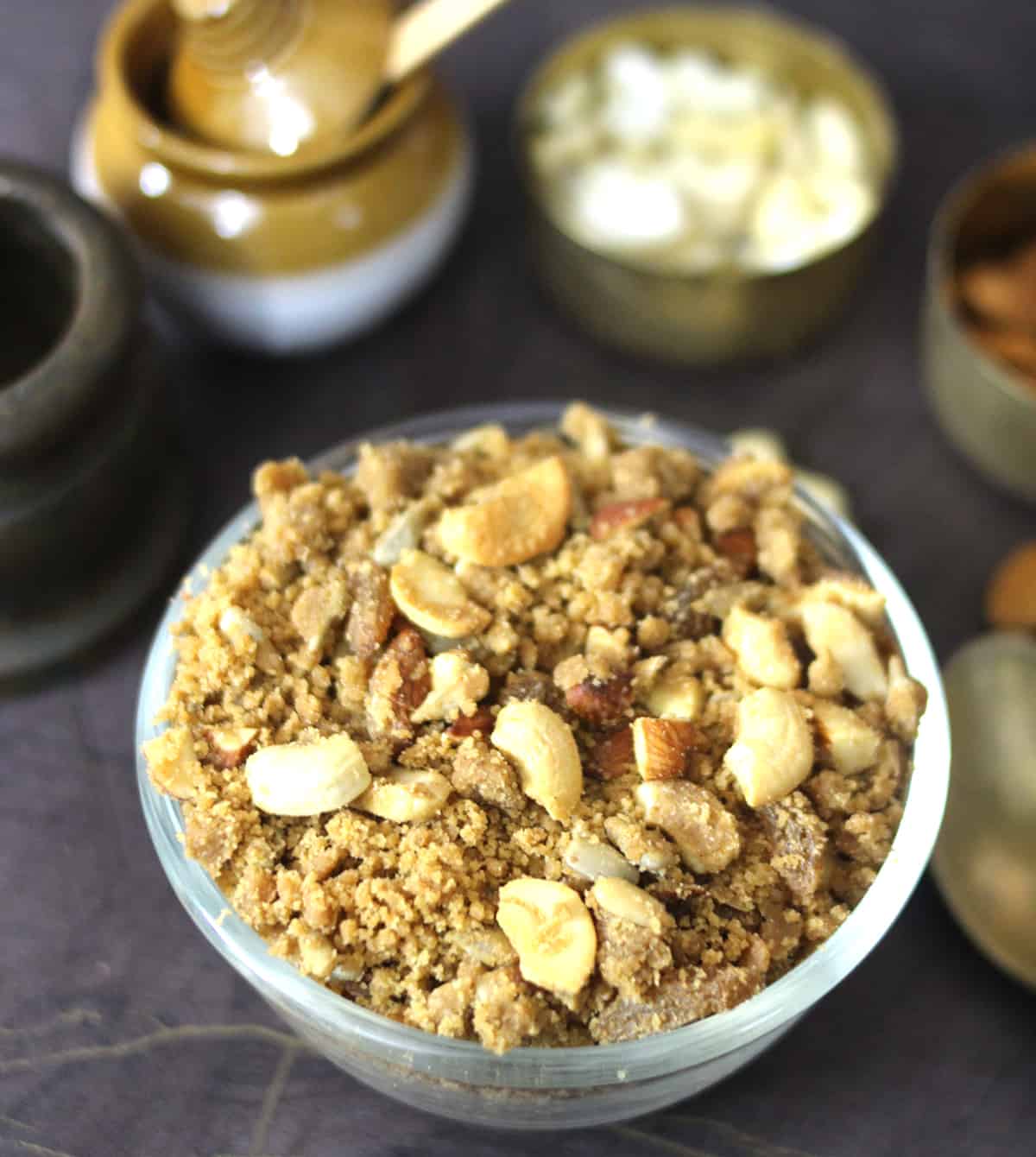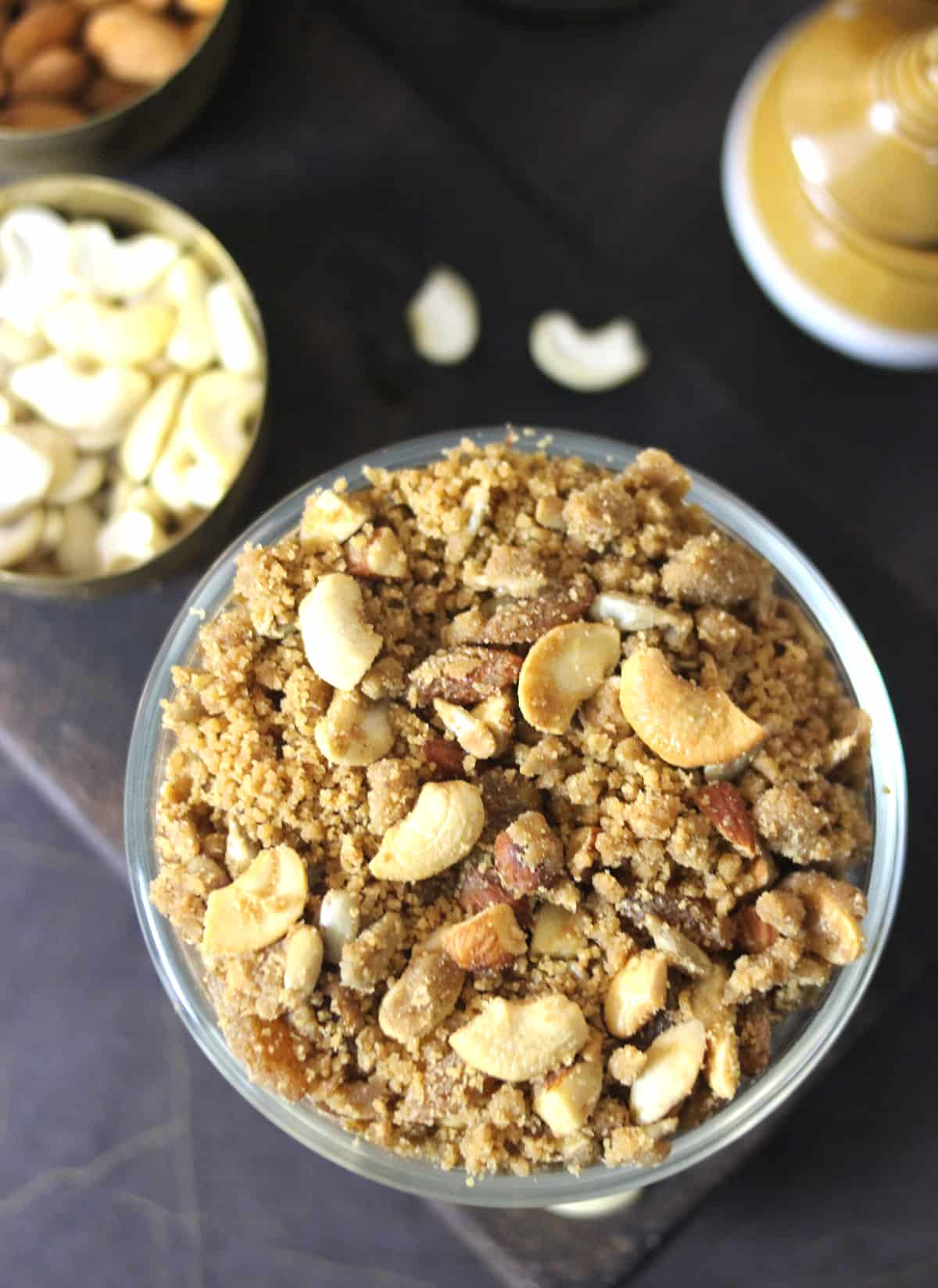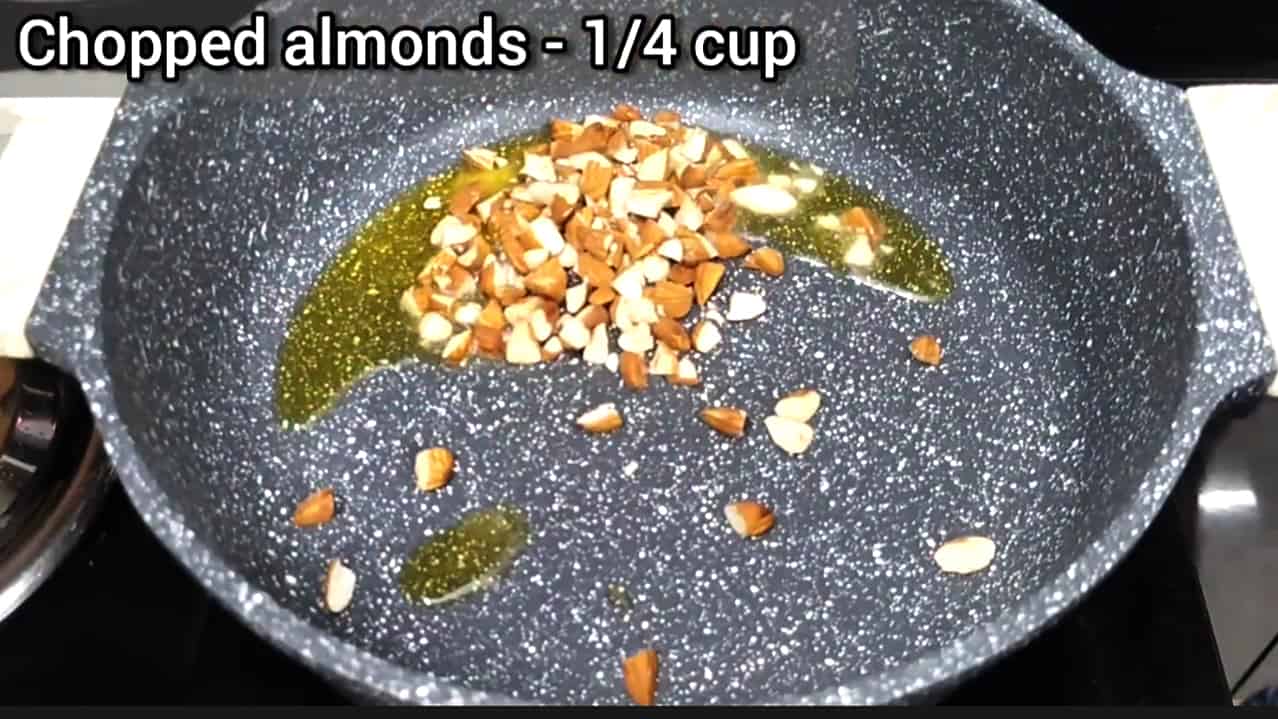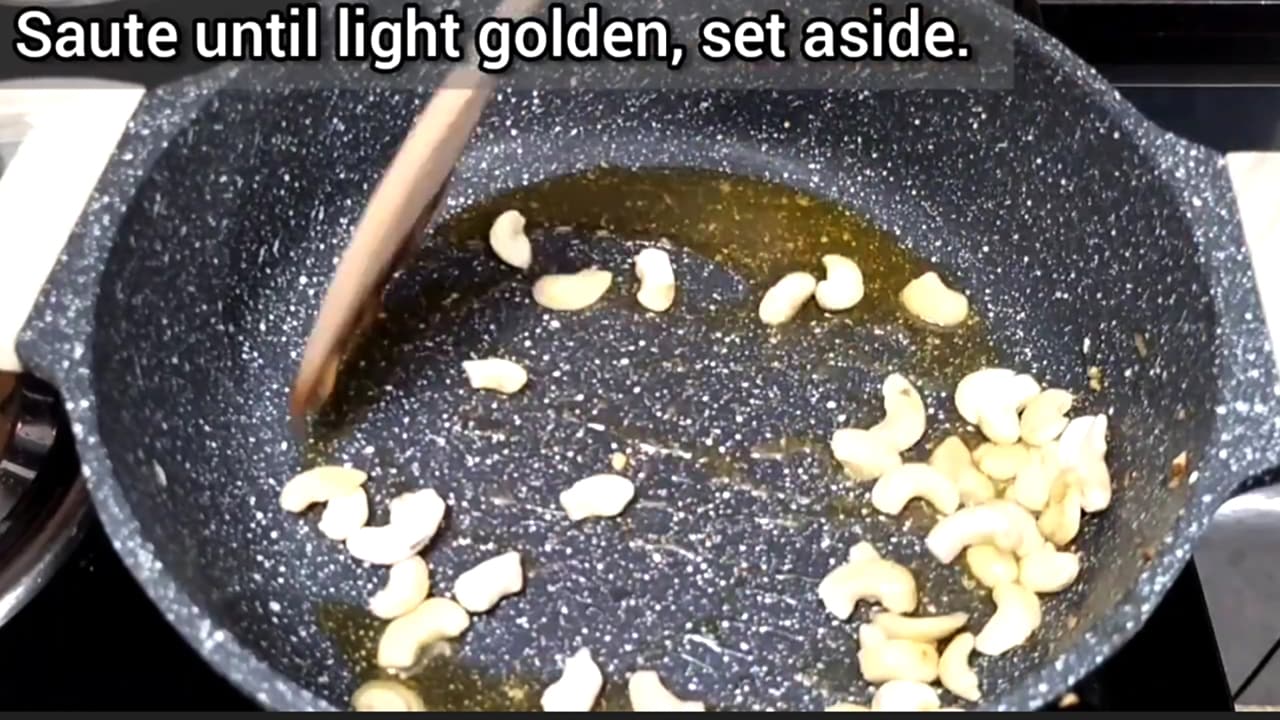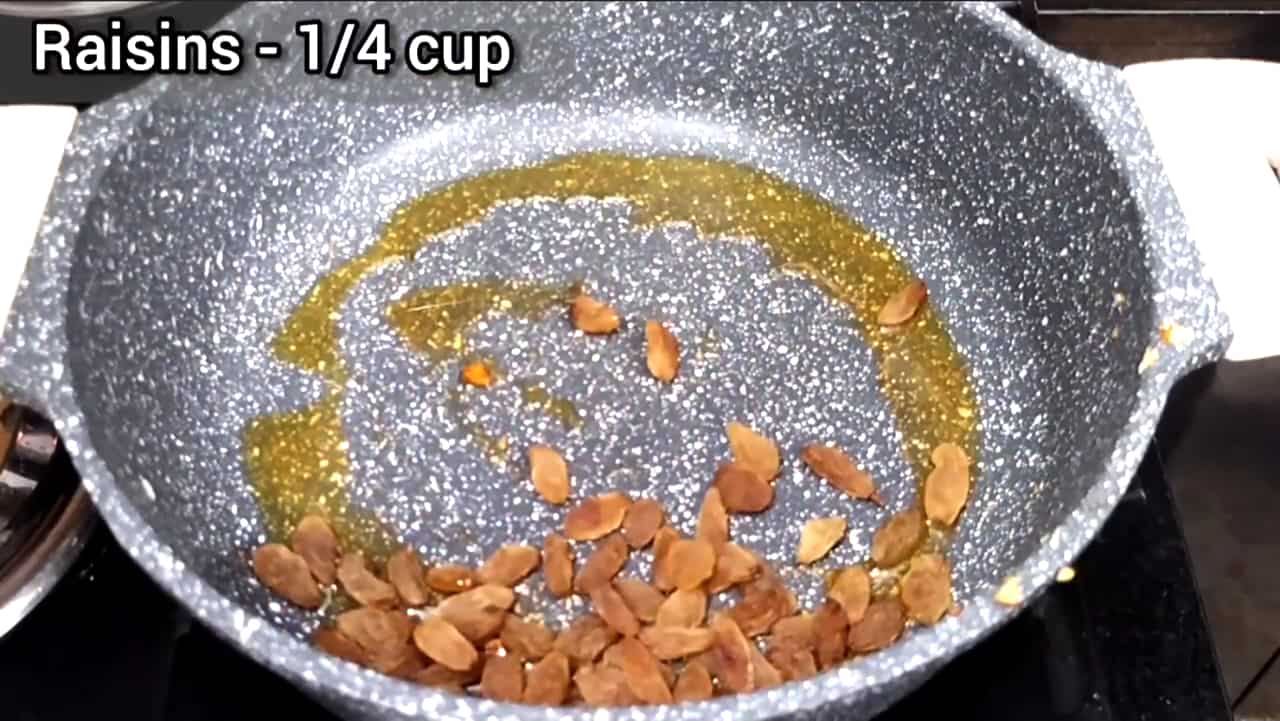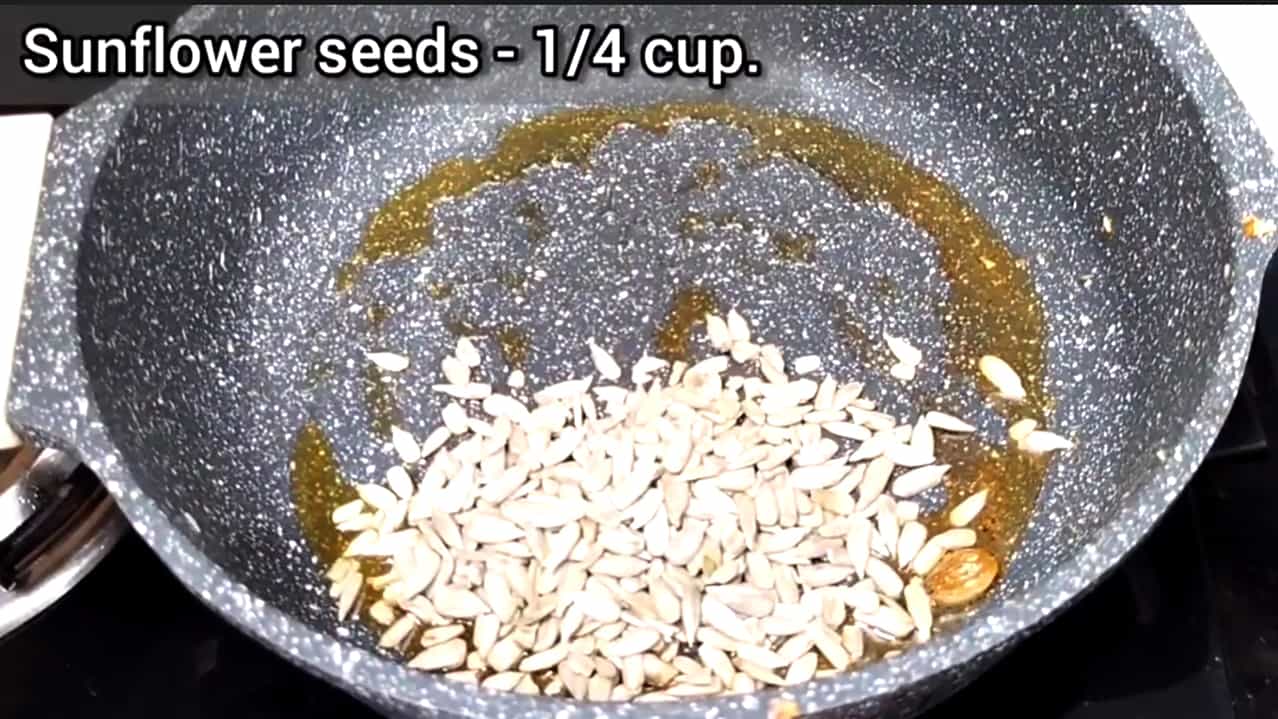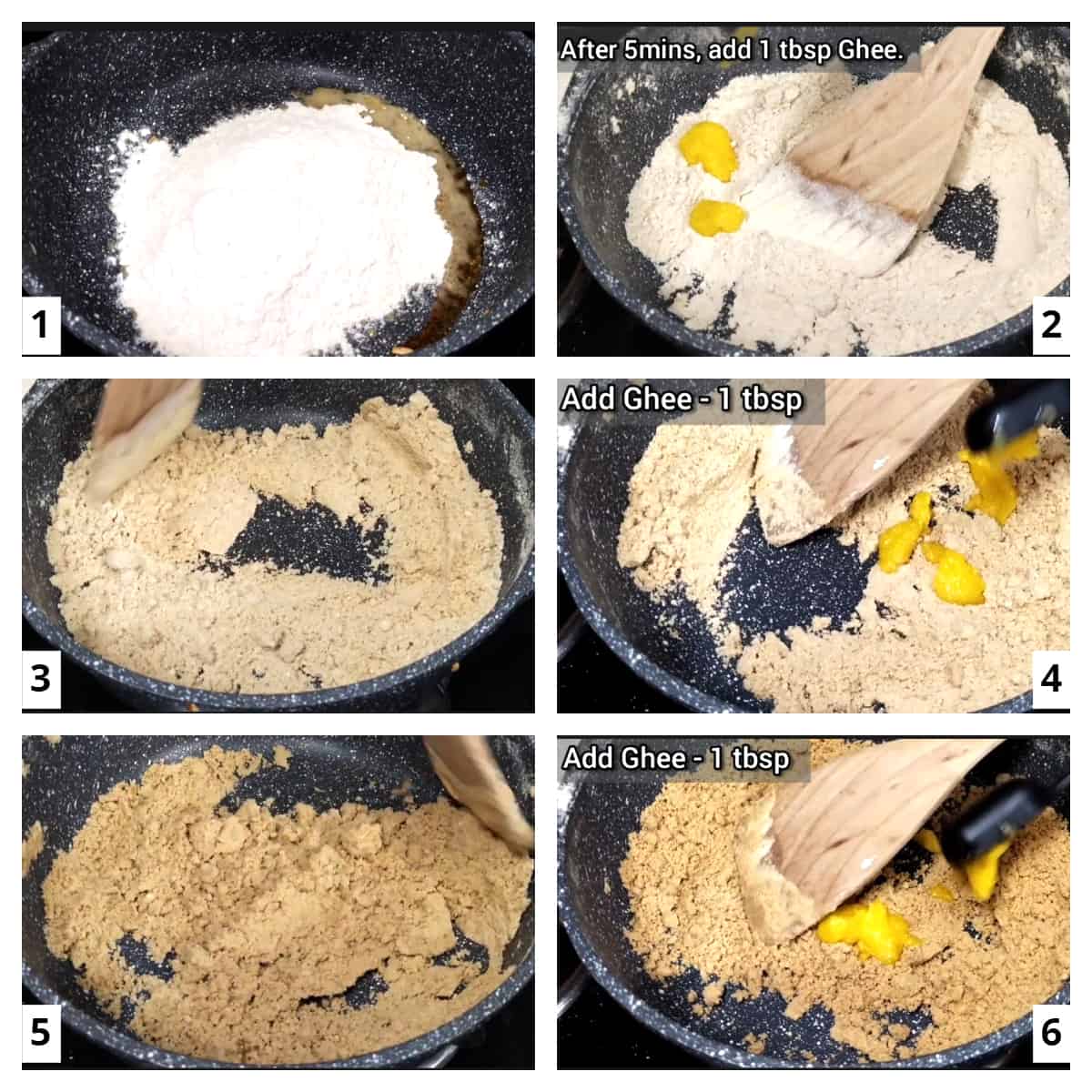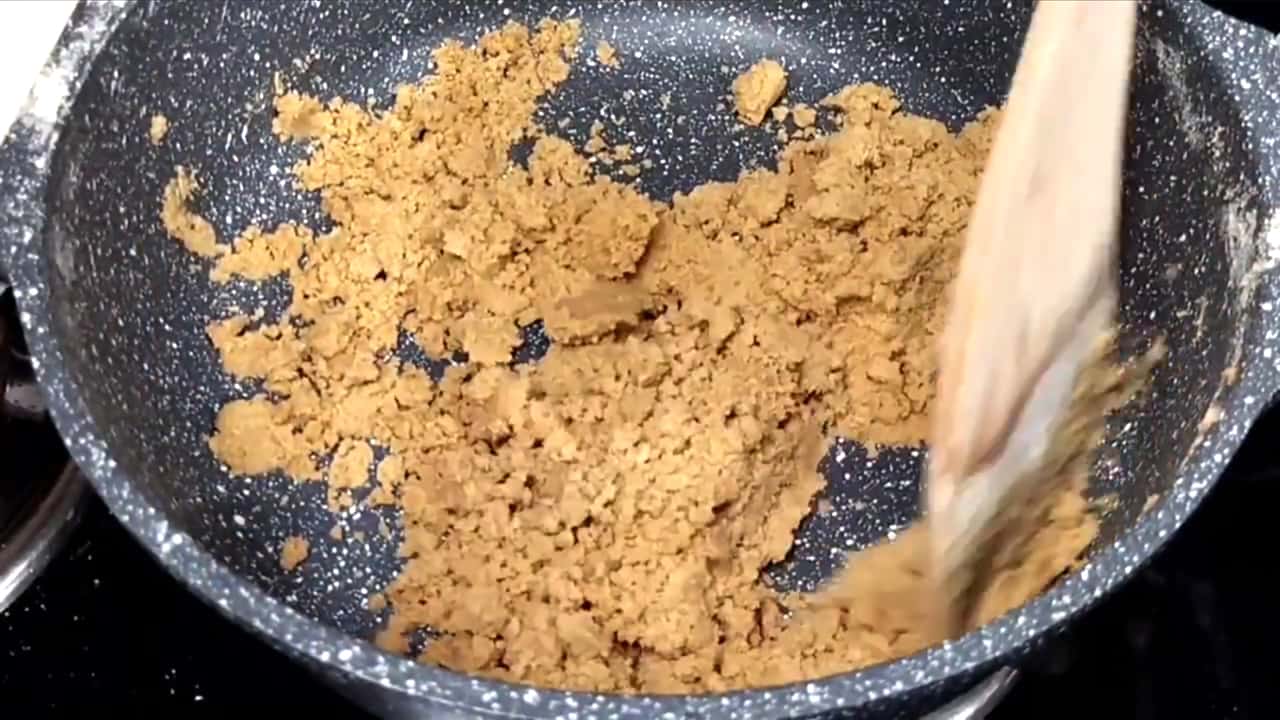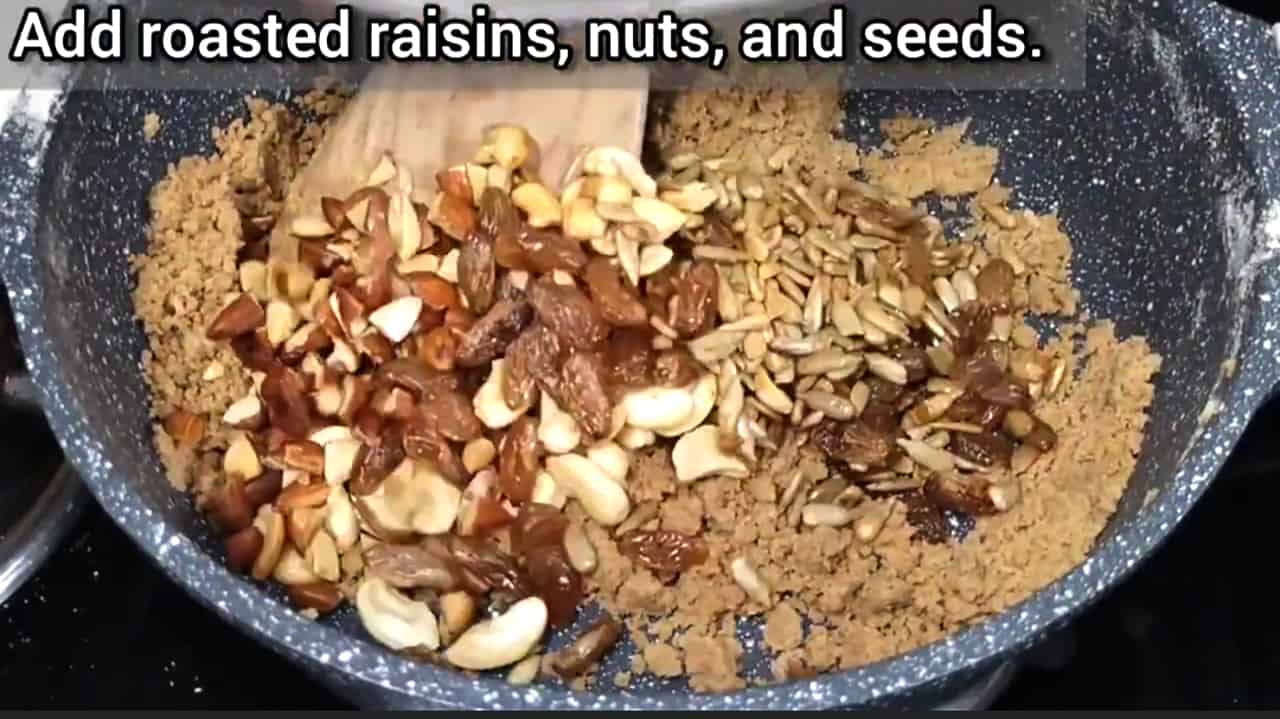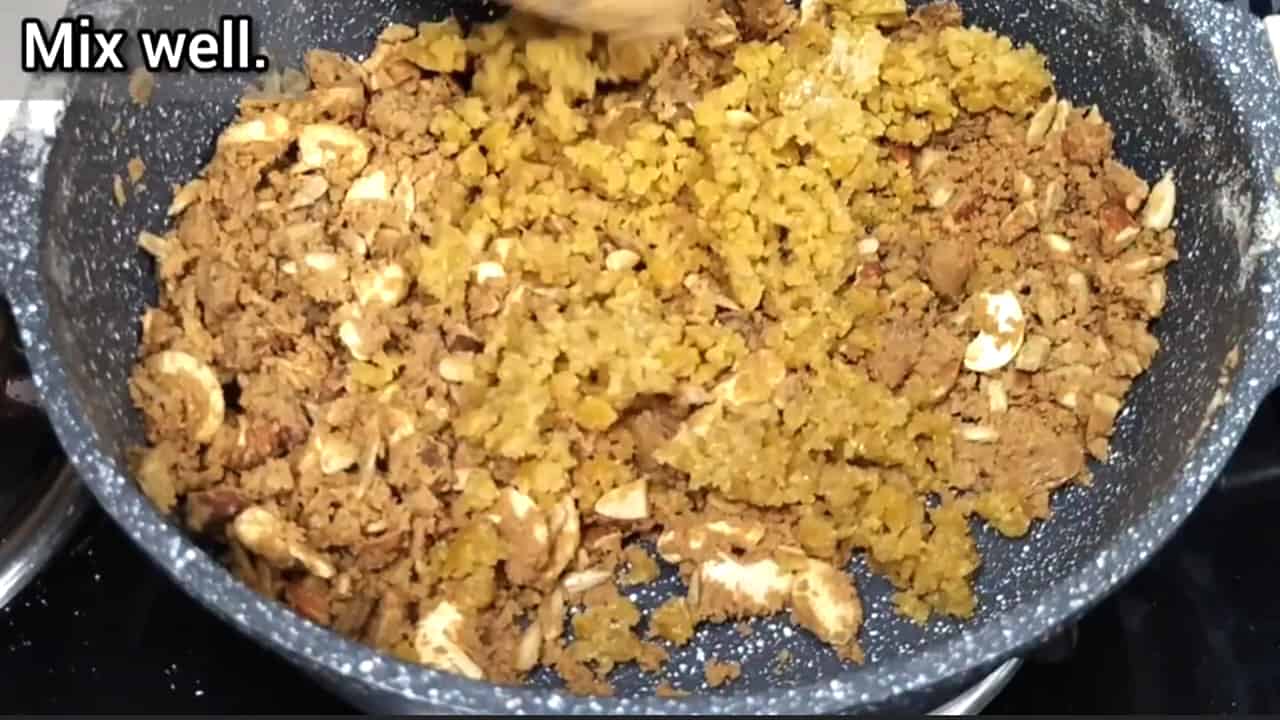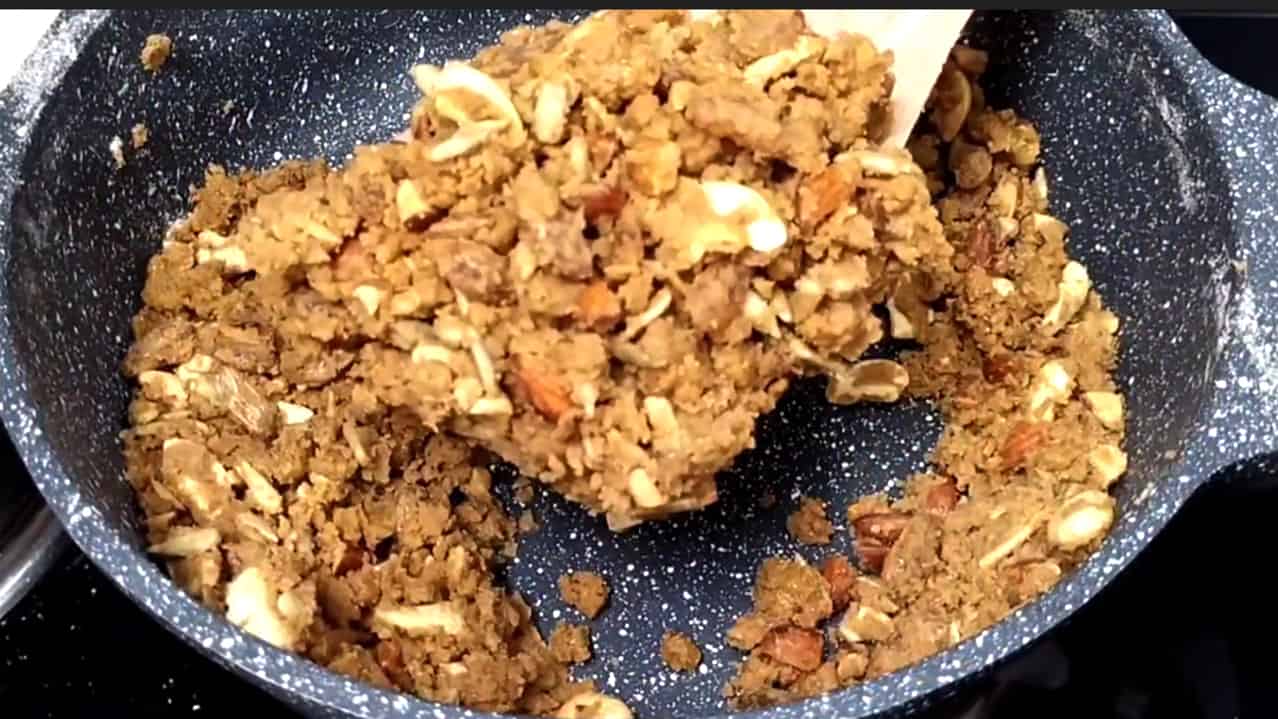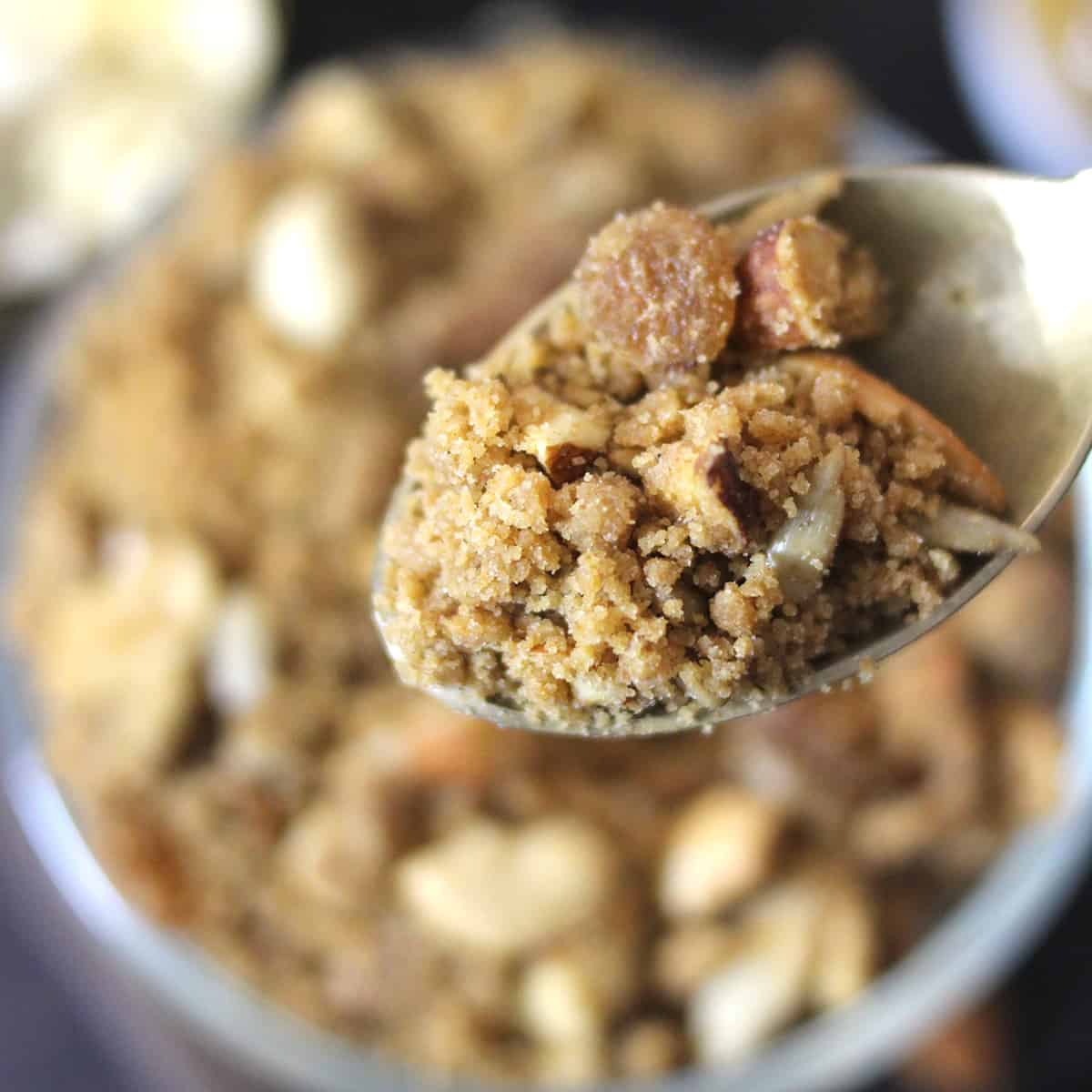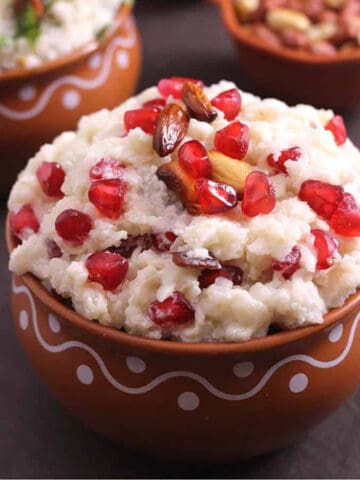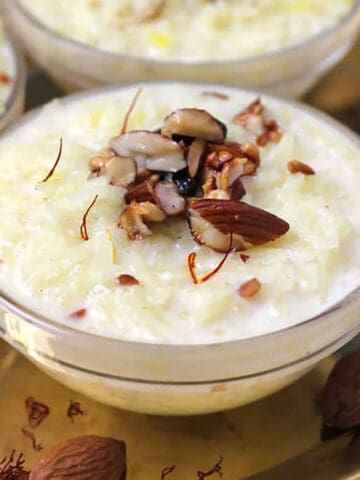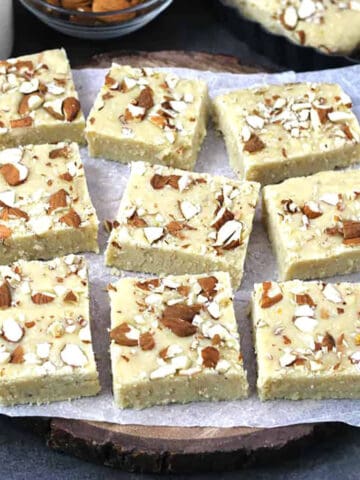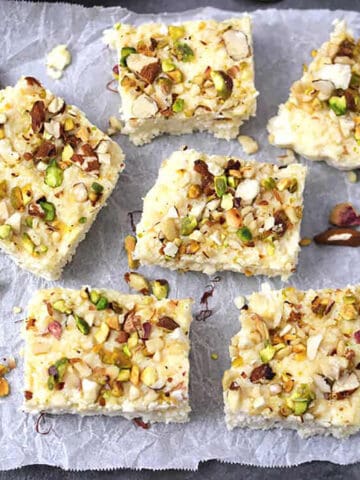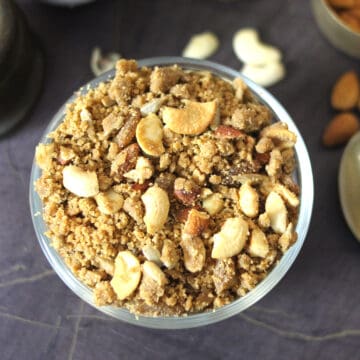While you are here, also check out sooji ka halwa (sheera), and atta halwa (kada prasad), popular Indian prasad recipes. Jump to:What is panjiri?Panjiri ingredientsHealth benefits of atta panjiriHow to make panjiri?TipsStoreMore Janmashtami sweetsRecipe cardUser Reviews
What is panjiri?
Panjiri (panjeeri) is a traditional Punjabi dessert evolved from an Ayurvedic preparation called Panchajīraka, made using whole wheat flour, ghee, and sugar. In North India, this classic dessert, also called dabra, is mainly prepared during winter. It is known to keep the body warm with ingredients added like goond (gondh), kamarkas (edible gums), ginger powder (sonth), etc. I generally skip adding gondh because the temperature where I stay never goes too cold, even in winter. Aate Ki Panjiri (Aata panjeeri) is an authentic and traditional Krishna Janmashtami bhog prasad. You can also make panjeeri laddu by adding more ghee to the final mixture and shaping them into balls. Panjiri prasad is from North India. A similar traditional recipe prepared in South India is panchakajjaya (panchkadayi) for almost all pooja and festivals.
Panjiri ingredients
I will give the list of ingredients that are used traditionally to make panjiri. You don’t have to use all of them. Use only those ingredients that are readily available. A simple version made using wheat flour, ghee, and cashews itself tastes delicious. You can make panjeeri more wholesome and nutritious by adding your favorite nuts, seeds, and dry fruits. All ingredients listed below are easily available in any Indian or Asian store. Traditional panjeeri includes
Wheat flour (Atta) Ghee (clarified butter) Semolina or Suji Seeds like Char Magaz (Melon seeds), Sunflower seeds, Makhane (Lotus seeds), Ajwain or Carom seeds, Poppy seeds Dry fruits and nuts like Almonds, Cashews, Pistachios, Raisins, Walnuts (akhrot), Figs (Anjeer) Sugar or Jaggery or Powdered sugar (boora) Edible gums like goond, kamarkas Spices like Cardamom powder (elaichi), Ginger powder (saunth), Cumin (jeera), Coriander (dhaniya), Fennel (saunf) Dried coconut pieces/flakes
See the recipe card below for a full list of ingredients and measurements.
Health benefits of atta panjiri
Panjiri prevents joint and back pain because of the nutritious ghee and combination of the added dry fruits and seeds. It is one of the best foods for postpartum healing. It is known to increase the milk supply. It helps strengthen your bones and muscles. The ingredients generate heat that can be mainly used to cure chronic colds. This is the main reason panjiri is prepared frequently during winter.
Does panjiri increase the milk supply?
Panjeeri recipe is used as an excellent energy booster. If you are preparing this as a postpartum snack, Kamarkas or Gond is one ingredient I recommend adding while preparing panjeeri. It is believed to increase milk supply and also help to reduce back pain and any weakness post-delivery. I generally skip adding Gondh as I prepare this most of the time as prasad and as a sweet treat for my kids.
How to make panjiri?
Step 5 In the same pan, add tablespoon of ghee and wheat flour and roast this on medium to medium-low flame until the rawness goes off and it becomes aromatic. After roasting the flour for 5 minutes, I add ghee in 1 tablespoon increments every 2 minutes and saute for a total of 9 to 12 minutes until the flour is evenly roasted and aromatic.
Tips
Ghee and wheat flour are the main ingredients here. All other ingredients can be varied to one’s taste and availability. Jaggery can be substituted with khandsari or powdered sugar. Don’t use confectioner’s sugar as it has corn starch and thus spoils the taste. You can use granulated sugar in powdered form. If you want to make this panjiri vegan, simply use coconut oil or any vegan butter of your choice. Always see that when roasting wheat flour, the flame is medium or medium-low. It would be best if you keep sauteing so that it roasts uniformly and will never burn. The rawness should go off completely.
Store
Panjeeri can be stored in an airtight container at room temperature for at least a month and in a refrigerator for a longer shelf life.
More Janmashtami sweets
Did you like this recipe? Please leave a star ⭐️⭐️⭐️⭐️⭐️ rating below and/or a review in the comments section. You can also stay in touch with us through social media by following us on Pinterest, Facebook, Instagram, and Twitter.
Recipe card
